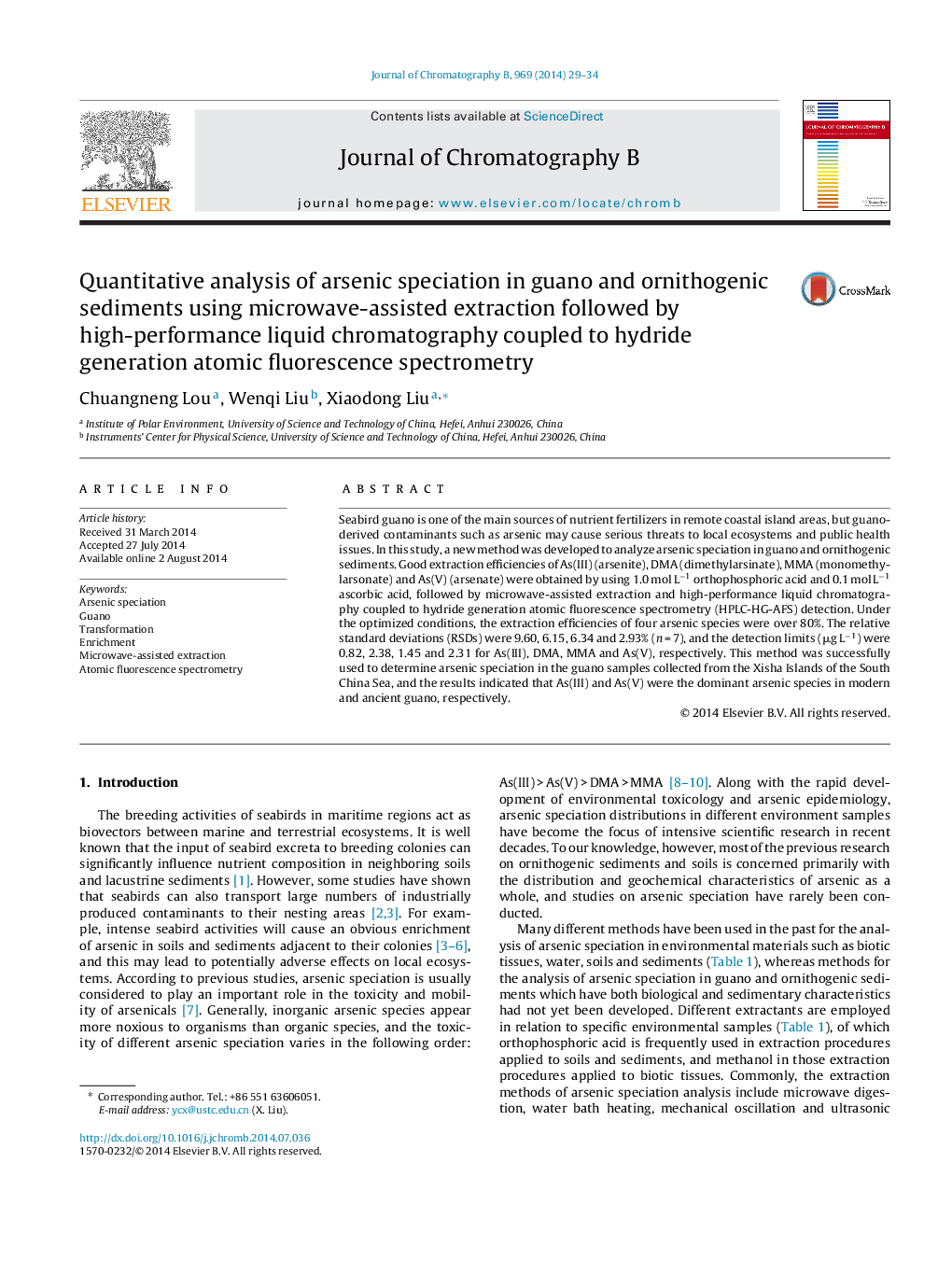| کد مقاله | کد نشریه | سال انتشار | مقاله انگلیسی | نسخه تمام متن |
|---|---|---|---|---|
| 1212525 | 1494074 | 2014 | 6 صفحه PDF | دانلود رایگان |
• A new method is developed to analyze As species in guano and ornithogenic sediments.
• Separation effects of As species with different H3PO4 concentrations are discussed.
• Extraction effects with different experimental operating conditions are examined.
Seabird guano is one of the main sources of nutrient fertilizers in remote coastal island areas, but guano-derived contaminants such as arsenic may cause serious threats to local ecosystems and public health issues. In this study, a new method was developed to analyze arsenic speciation in guano and ornithogenic sediments. Good extraction efficiencies of As(III) (arsenite), DMA (dimethylarsinate), MMA (monomethylarsonate) and As(V) (arsenate) were obtained by using 1.0 mol L−1 orthophosphoric acid and 0.1 mol L−1 ascorbic acid, followed by microwave-assisted extraction and high-performance liquid chromatography coupled to hydride generation atomic fluorescence spectrometry (HPLC-HG-AFS) detection. Under the optimized conditions, the extraction efficiencies of four arsenic species were over 80%. The relative standard deviations (RSDs) were 9.60, 6.15, 6.34 and 2.93% (n = 7), and the detection limits (μg L−1) were 0.82, 2.38, 1.45 and 2.31 for As(III), DMA, MMA and As(V), respectively. This method was successfully used to determine arsenic speciation in the guano samples collected from the Xisha Islands of the South China Sea, and the results indicated that As(III) and As(V) were the dominant arsenic species in modern and ancient guano, respectively.
Journal: Journal of Chromatography B - Volume 969, 15 October 2014, Pages 29–34
